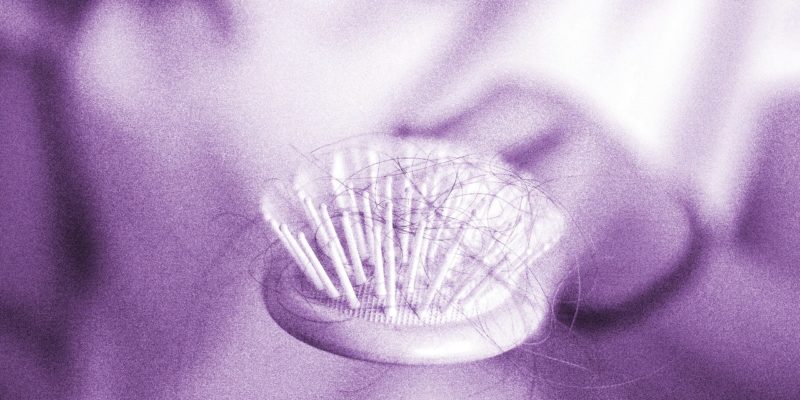Is the Pandemic Causing Stress-Related Hair Loss?
Zeichner co-signs: “Even with no treatment, the condition will correct itself over several months.” Which is why, under normal circumstances, telogen effluvium sufferers will often ride it out rather than spending time and money on regrowth solutions. But when the source of one’s stress is an enduring global pandemic, the resultant shedding can feel equally neverending.
For many patients, “the hair loss is not going away; it’s not getting better,” says Sarkar. In light of this fact, she adds, “I offer therapy earlier and they usually take it earlier. [There’s] a much higher proportion of people jumping on doing something now versus waiting.”
The Diagnosis
Treatment typically starts with what’s known as a pull test. The doctor will firmly grasp a section of hair near the scalp and tug all the way down, repeating this around the head. “In the true telogen phase, the connection of the hair shaft to the scalp is very loose, and I’ll get a bunch of hairs out — not just one or two but like six [per pull],” says Hausauer.
When the strands dislodge, they have tiny bulbs attached to the roots. A preponderance of hairs with club-shaped bulbs — follicles shaped like the end of a golf club — indicates an abnormal number of hairs in the telogen phase, explains Sarkar. “Most hairs should be in the anagen phase and have plump, beautiful bulbs,” she adds.
Your dermatologist will likely send you for bloodwork next. “We always check thyroid function when someone has hair loss,” Sarkar says. “Abnormalities in thyroid hormone levels — in either direction, meaning too high or too low — can cause hair loss on their own. So, checking thyroid in hair loss is imperative — we won’t solve hair loss without normalizing the thyroid hormone.”
Moreover, thyroid disease can cause its own hair changes, making strands brittle or very fine and downy, so the combination of hypo- or hyperthyroidism along with telogen effluvium “can be a double whammy,” Hausauer says. If she notices someone’s levels are off, she’ll refer them to an endocrinologist for further investigation and thyroid-specific treatment.
Doctors also parse lab results for deficiencies in nutrients “that play a role in building strong hair,” says Hausauer, like vitamins D and B12 along with ferritin, “which is a marker of total body iron.” Low levels in isolation may not spark telogen effluvium, but they “can leave you more vulnerable, so if hit with a stressor, you’ll be more apt to experience shedding,” she adds. Filling the nutritional gaps revealed by your bloodwork is vital to treatment — and sometimes supplements alone can be enough to jumpstart hair growth.
Topical Minoxidil
Rogaine (5 percent minoxidil) is another first-line fix for telogen effluvium. It “dilates blood vessels to encourage the optimal delivery of oxygen and nutrients to the hair follicles,” Zeichner says. It’s not without drawbacks though. Minoxidil can take months to show results. It can be irritating. And sometimes it worsens shedding before improving it.

